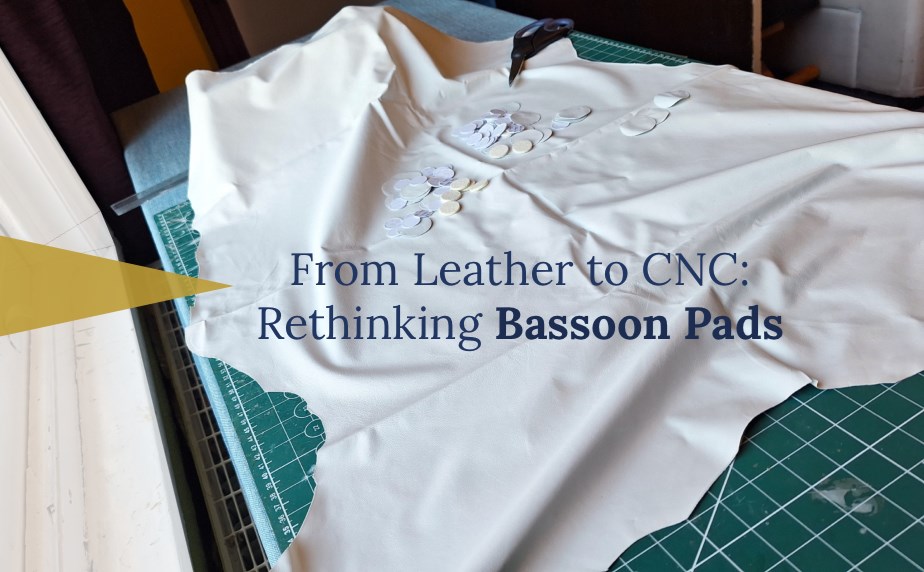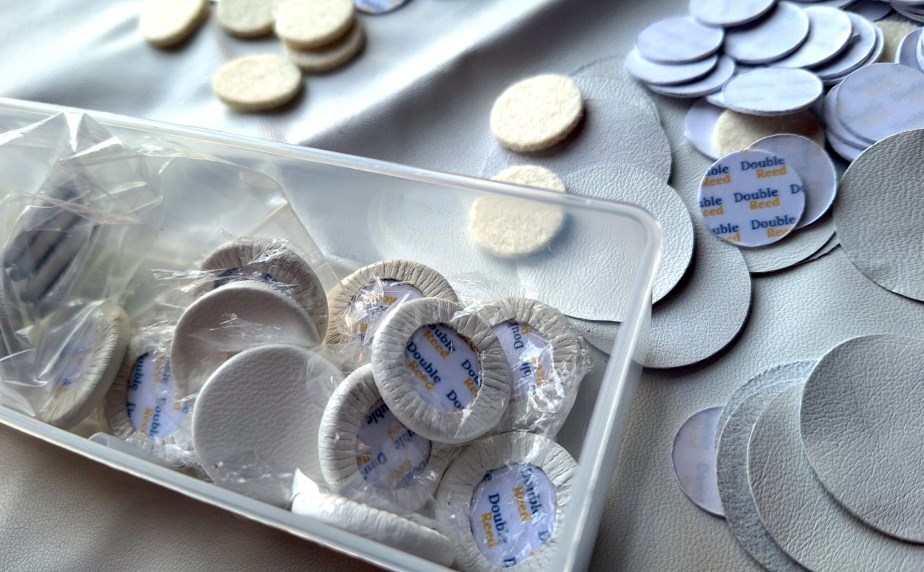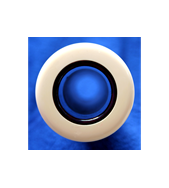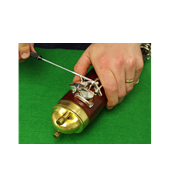From Leather to CNC: Rethinking Bassoon Pads
September 5th, 2025

Padding through the musical jungle
Why Pads Matter
So much of bassoon playing comes down to padding – those tiny adjustments that ensure every pad seals perfectly against the tone hole. Pads are not just components; they’re the foundation of the instrument’s performance. A bassoon with poor pads will never play at its best, no matter how good the reed or player.
Given their importance, we decided it was time to dig deeper: what are pads really made from, why are they made that way, and could we improve them?
A Short History of Bassoon Pads
Two centuries ago, bassoon pads were little more than leather coverings. Today, they appear similar at first glance: still leather-faced, but built with felt and card beneath to provide structure, cushioning, and a reliable seal.
The details, however, matter enormously. The face is made from the thinnest, softest kid- or lamb-skin—leathers usually reserved for luxury fashion. Their smooth grain adapts to the tiniest irregularities on a tone-hole rim. Beneath, carefully chosen felt of precise thickness and density offers just the right amount of “give” in sub-millimetre tolerances, while the card backing provides strength. The synergy of these three layers gives the modern pad its durability and its seal.
Searching for Something Better
At the start of 2025 we launched a project: could we make a pad that performed as well as, or better than, those already available?
We researched extensively, sourcing leathers, felts, and backing materials from suppliers across Europe. We experimented with alternative materials too, but nothing matched the responsiveness and tonal stability of the traditional leather-and-felt combination.
Once we had the right ingredients, the challenge was how to assemble them with absolute consistency.
From Leather to CNC
Accuracy was paramount. Pads are unforgiving: even fractions of a millimetre can mean the difference between a clean seal and a leaky note. Cutting thin leather and soft felt by hand risked distortion, so we turned to our CNC cutting machine.
It wasn’t straightforward. These flexible materials tend to stretch or snag under a blade, turning circles into ovals. After some persistence, though, we developed methods to cut clean, repeatable discs in every size we needed.
Next came shaping. For this we harnessed our 3D printer, producing custom formers that allowed us to press the materials together precisely. Each pad size required a full set of formers, and with sizes ranging from 10 mm to 28 mm in 0.5 mm increments, the printer was busy for weeks.
Finally, a hydraulic press ensured every pad reached its exact final thickness and diameter. Some of the innovations we introduced remain closely guarded secrets – but they make a difference.
The Result
After rigorous testing, we’re confident our pads stand shoulder-to-shoulder with the best on the market. Our repairers prefer them – the highest endorsement we could hope for – and we now use them exclusively in our workshop.
An added bonus of in-house production is flexibility: we can make custom pads when standard thicknesses aren’t ideal.

Looking Ahead
Contrabassoon pads are next on our agenda, and after that – who knows where our padding through the musical jungle will take us? One thing is certain: the bassoon may be centuries old, but there is still room to innovate.







